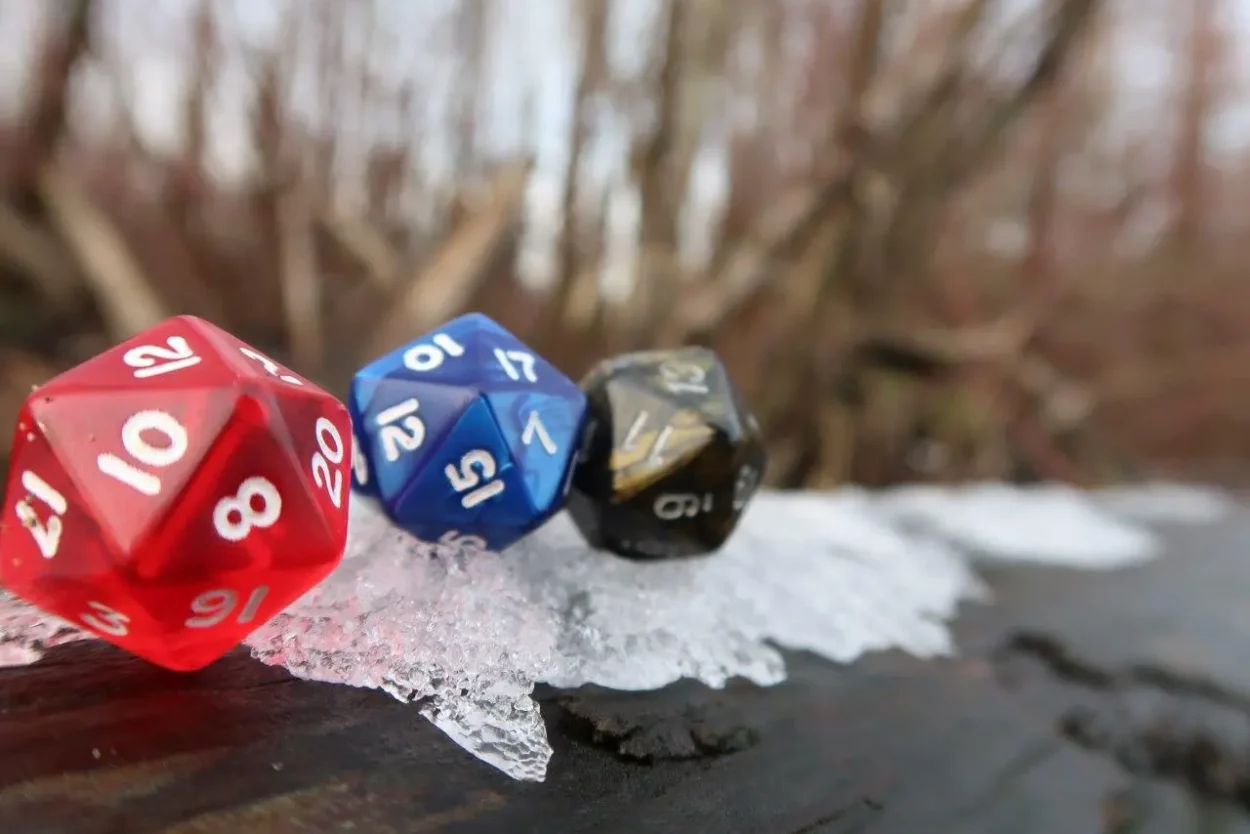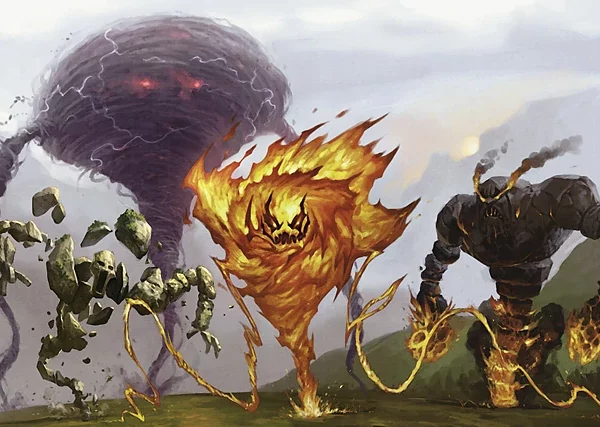If you’re getting ready to play Dungeons & Dragons 5th Edition, you may have heard the term “saving throws” used.
Basically, they are a type of d20 roll that you make to keep something bad from happening to your character. But there’s more to it than that, of course.
I’ll tell you everything you need to know about DnD saving throws in this article.
First of all, let’s talk about what saving throws are in 5e.
What are the saving throws in DnD 5e?
In 5e, saving throws are what you do to avoid or stop a bad effect.
On page 179 of the Player’s Handbook, “saving throws” is described as:
“A saving throw–also called a save–represents an attempt to resist a spell, a trap, a poison, a disease, or a similar threat. You don’t normally decide to make a saving throw; you are forced to make one because your character or monster is at risk of harm.”
If someone tries to use magic or some other effect on your character, you’ll roll a saving throw. Now, this doesn’t apply to attack rolls in 5e. There are only a few other effects.
To make a saving throw in 5e, you’ll take your 20-sided die (d20) (d20). Then, you’ll add your Ability Score modifier and, if you have one, your Proficiency Bonus. The total is what you use to see if you succeed at your save or not.
During your D&D game, your Dungeon Master may ask you to make a saving throw to protect someone from something bad.
Saving throws aren’t usually something you choose to do. Most of the time, you have to make a save against something from the outside, like a spell or a trap.
Depending on the type of save and whether or not you make it, you either won’t get hurt or the effect will be lessened.
This could be an effect like charm or fear, or it could be damage. If you fail a saving throw, the spell or ability will usually hit you hard.
There are many spells and skills that require saving throws. And, each of them uses a metric called the Difficulty Class to see how hard it is to succeed.
Difficulty Class
The DC or Difficulty Class of a spell, ability, or other effect tells how hard it is to pass a saving throw. It’s a number that tells how hard a given roll is.
When you make a saving throw or an Ability Check, the DC is the number you roll against.
The players’ spell and class or racial saves are based on their DC. DCS can be found in a creature’s stat block or set on the spot by the DM.
For instance, in the Monster Manual, an Archmage has a set spell save DC, but there’s nothing that says you can’t change it.
But if a player wants to try to jump across a wide chasm, you as the DM need to decide how hard that jump will be. In the same way, the Difficulty Classes of traps should be set ahead of time.
Now, of course, the roll gets harder as the DC goes up.
We DMs are lucky that Wizards gives us a handy chart that shows how hard most DCs are. On page 174 of the PHB, the following are listed:
- DC 5 = Very Easy
- DC 10 = Easy
- DC 15 = Medium
- DC 20 = Hard
- DC 25 = Very Hard
- DC 30 = Nearly Impossible
What do these numbers mean, though?
Well, when you start adding things up, it all falls apart. The numbers 1 through 5 make up 25% of the numbers on a d20. So, a player has a 75% chance, not counting any modifiers, of rolling a 6 or higher.
Also, without modifiers, a player only has a 5% chance of rolling a 20. And going past that to DC 25 or 30 is nearly impossible without characters with higher levels.
Death Saving Throws
In 5e, death saves are a special kind of saving throw that characters make when they have no more hit points left.
Now, death saves are different from other saving throws because they don’t use an Ability Score.
They still count as a way to save. But they don’t count as Ability Checks. And since they don’t use an Ability Score, you can’t add anything to your roll.
For the death save to work, you have to roll a 10 or higher. If you make it to three, you will be stable and not die.
If you fail three times, you will die.
So, don’t fail. Just like that.
How to Determine Saving Throws in 5e

Now that you know what a 5e saving throw is, how do you figure it out?
Saving throws are based on two things: 1) the Ability Score Modifier for that save, and 2) whether or not you are skilled at that save.
In 5e, you use the following formula to figure out your saving throws:
Saving Throw Modifier = Corresponding Ability Score Modifier + Your Proficiency Bonus (if proficient)
So, if your Strength score is 18, your base saving throw bonus is +4. Because an Ability Score of 18 has a +4 Ability Score Modifier, this is what happens.
Now, you add your Proficiency Bonus if you’re good at that saving throw.
Using the Strength example, if you have a 4th-level character with a Strength score of 18 and proficiency in Strength saving throws, your modifier is +6 (+4 from Strength and +2 from proficiency bonus).
But keep in mind that your proficiency bonus doesn’t count if you aren’t proficient in that saving throw. Your character’s first class will tell you how good you are at any given saving throw.
Another thing to think about is if your target has a cover and you’re forcing them to make a Dexterity save.
Half Cover and Three-Quarter Cover give creatures bonuses on their Dex saves. So, keep that in mind when you choose a creature to target or when you choose to become the target of a spell or ability.
DnD 5e Saving Throw Examples
Here are some examples of each of the six ways to save yourself.
Strength Saving Throw Examples
- catching a party member who falls
- Don’t let a runaway cart push you around.
- Holding on to something while someone tries to take it away from you
Now, I will say that many of these could be contested Strength ability checks. Everything depends on your DM.
Dexterity Saving Throw Examples
- Trying to avoid getting caught in a trap
- Taking less damage when you fall (this could be a Dexterity (Acrobatics) check)
- Resisting spell effects, like making the fireball spell do less damage,
A lot of spells and other skills require Dexterity saving throws. So, it’s great to have a high Dexterity score.
Constitution Saving Throw Examples
- Fighting against the things that make you tired
- Getting ready in case a meal is poisoned
- Spell effects like the cone of cold spell damage can be resisted.
Intelligence Saving Throw Examples
- Not being affected by spells like “feebleminded.”
- avoiding monster skills like the Mind Blast of the Mindflayer
In all honesty, you probably won’t make a lot of Intelligence saving throws. But when you do, it’s usually to stop something that could kill you or make you very weak.
Wisdom Saving Throw Examples
- Keeping your cool after seeing or doing something strange
- Not being affected by spells like “charm person”
Like Dexterity, many spells and abilities require Wisdom saving throws.
Charisma Saving Throw Examples
- Not being affected by spells like “banishment”
- Monster abilities like the Ghost’s Possession can be blocked.
Like with Intelligence, you won’t need to roll a Charisma saving throw very often. Most of the time, though, they are against some harsh effects.
Final Words
That’s all there is to 5e saving throws.
Saving throws are a type of roll in D&D 5e that you make when you have to avoid something bad.
You’ll roll your 20-sided die and add your saving throw modifier to get the total. You’ll add the ability score modifier and maybe your proficiency bonus to the roll.
There are times when a saving throw might be better than an ability check or a contested roll.
But as a general rule, you should only roll saving throws when something bad is happening to a character, not when they want to do something.
Saving throws are like reactive rolls in this way.









